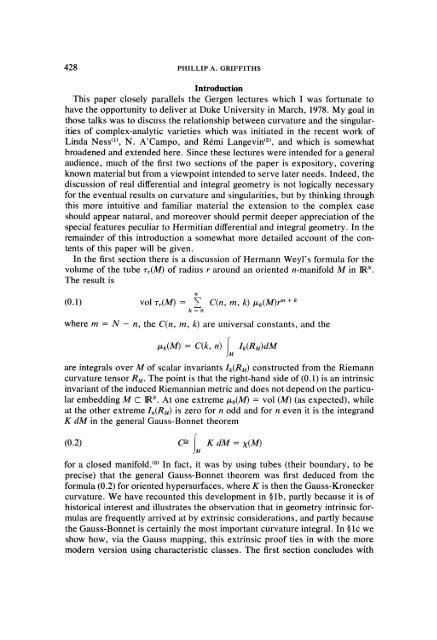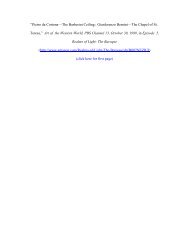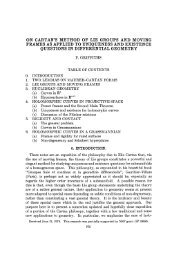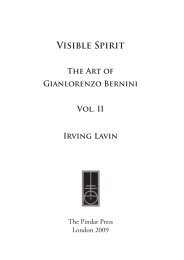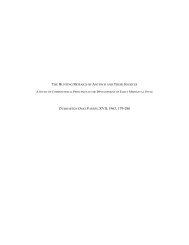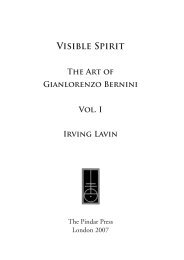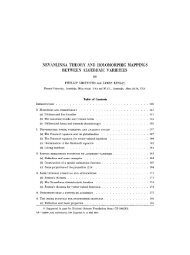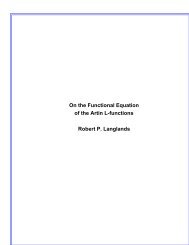View PDF - Project Euclid
View PDF - Project Euclid
View PDF - Project Euclid
You also want an ePaper? Increase the reach of your titles
YUMPU automatically turns print PDFs into web optimized ePapers that Google loves.
428 PHILLIP A. GRIFFITHS<br />
Introduction<br />
This paper closely parallels the Gergen lectures which I was fortunate to<br />
have the opportunity to deliver at Duke University in March, 1978. My goal in<br />
those talks was to discuss the relationship between curvature and the singularities<br />
of complex-analytic varieties which was initiated in the recent work of<br />
Linda Ness1), N. A’Campo, and R6mi Langevin), and which is somewhat<br />
broadened and extended here. Since these lectures were intended for a general<br />
audience, much of the first two sections of the paper is expository, covering<br />
known material but from a viewpoint intended to serve later needs. Indeed, the<br />
discussion of real differential and integral geometry is not logically necessary<br />
for the eventual results on curvature and singularities, but by thinking through<br />
this more intuitive and familiar material the extension to the complex case<br />
should appear natural, and moreover should permit deeper appreciation of the<br />
special features peculiar to Hermitian differential and integral geometry. In the<br />
remainder of this introduction a somewhat more detailed account of the contents<br />
of this paper will be given.<br />
In the first section there is a discussion of Hermann Weyl’s formula for the<br />
volume of the tube r(M) of radius r around an oriented n-manifold M in IRN.<br />
The result is<br />
(0.1) vol rr(M) m C(n, m, k) tz(M)r +<br />
k=O<br />
where rn N n, the C(n, m, k) are universal constants, and the<br />
Ix(M) C(k, n) It I(nt)dM<br />
are integrals over M of scalar invariants I(R) constructed from the Riemann<br />
curvature tensor R. The point is that the right-hand side of (0.1) is an intrinsic<br />
invariant of the induced Riemannian metric and does not depend on the particular<br />
embedding M C IRN. At one extreme/x0(M) vol (M) (as expected), while<br />
at the other extreme I,(Rt) is zero for n odd and for n even it is the integrand<br />
K dM in the general Gauss-Bonnet theorem<br />
(0.2) Ct It K dM x(M)<br />
for a closed manifold. (z) In fact, it was by using tubes (their boundary, to be<br />
precise) that the general Gauss-Bonnet theorem was first deduced from the<br />
formula (0.2) for oriented hypersurfaces, where K is then the Gauss-Kronecker<br />
curvature. We have recounted this development in lb, partly because it is of<br />
historical interest and illustrates the observation that in geometry intrinsic formulas<br />
are frequently arrived at by extrinsic considerations, and partly because<br />
the Gauss-Bonnet is certainly the most important curvature integral. In c we<br />
show how, via the Gauss mapping, this extrinsic proof ties in with the more<br />
modern version using characteristic classes. The first section concludes with


